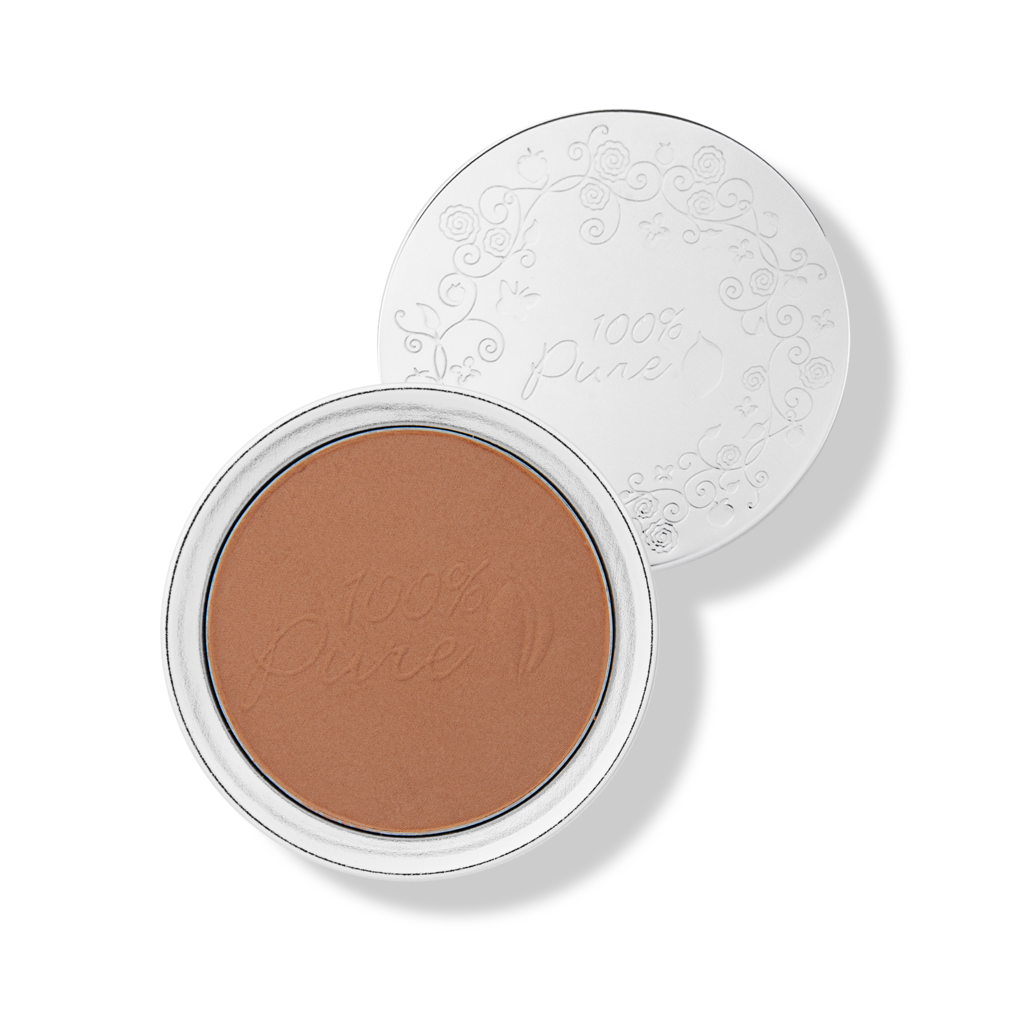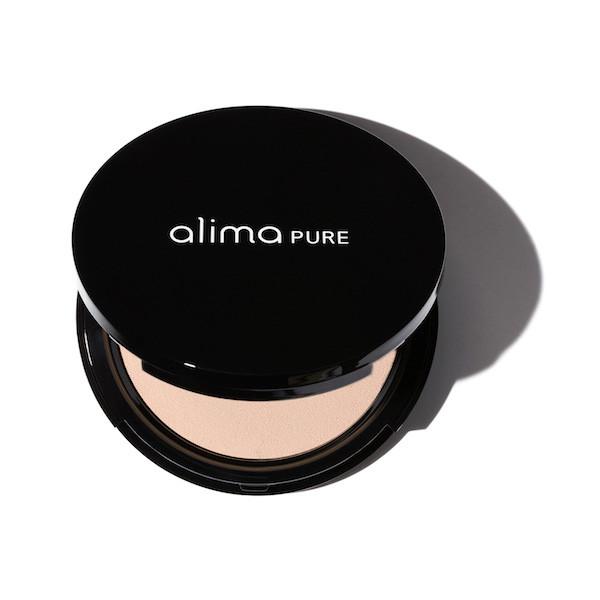Featuring flawless coverage and finish, while still letting your skin breathe!

Do you wear makeup to cover up blemishes or enhance your features? No matter why you rock your look, it can be a huge pain when the foundation you’re using to smooth your complexion actually breaks out on you instead.
Maybe it was an allergic reaction to an ingredient, or maybe you weren’t too careful with cleansing your face before going to bed for the night.
But it’s not necessarily your fault. Did you know that some foundations are more likely to clog your pores than others?
We’re here to help you figure out how to choose a non-comedogenic foundation you can rely on. Everyone deserves to empower themselves with makeup that actually works with their skin.
What Does Non-Comedogenic Mean?
Having a hard time wrapping your head around this word? It’s based on the word “comedo,” which is the technical term for something we’re all too familiar with: clogged pores.
If an ingredient or product is comedogenic, that means it causes clogged pores. If it’s non-comedogenic, it means that it’s not supposed to clog pores. It’s as simple as that.
If you have oily skin or are especially acne-prone, comedogenic makeup is your worst enemy. Having dirt, bacteria, oil clog your pores all at once is a recipe for a pimply disaster. It doesn’t help to have your foundation adding to the mix.
Foundation sits on your face all day long, and is the first layer of makeup that’s touching your skin. That’s why choosing a non-comedogenic foundation can literally make or break your look.
How to Identify Non-Comedogenic Foundation
There’s just one caveat, though. It’s not as easy as picking up a foundation that’s labeled “non-comedogenic.” Just like the words “natural” and “organic” in the beauty industry, there’s no set standard for what “non-comedogenic” means.
Choosing a product that’s “dermatologically tested” may put you more in the safe zone. But ultimately, everyone’s skin reacts differently to each ingredient. That’s why it’s important to actually scan the ingredients label of each product before buying it. What works for some skin types may not work for you.
How to Find a Non-Comedogenic Foundation
Looking for the word “non-comedogenic” is a good place to start, but we recommend doing your research beyond that. What have other people with similar skin types said about the foundation? Oil-free foundations are tempting to try. But not all oils clog pores. In fact, some are quite good for your skin. And there are many non-oil ingredients that are still comedogenic.
Not to worry. It’s still possible to find a full coverage foundation that won’t suffocate your pores. We’ll break down the top ingredients you should avoid, as well as the ones that make the cut.
Ingredients to avoid
These ingredients are commonly found in comedogenic beauty products. Some cosmetic companies appeal to the look and feel of their products, rather than ensuring a healthy, long-lasting relationship with your skin. Keep an eye out for these risky ingredients.
Silicone
Silicone is actually on our no-list for all skin care, makeup, and hair care products. Silicone is often used in cosmetics to help make your skin or hair feel silky smooth. It forms a seal on the surface of your skin and hair.
While you might feel nicely moisturized, over time silicone can weaken and dry out your skin, especially if you wear foundation everyday or for 16 hours straight. That’s because it’s difficult to rinse silicone off properly. What’s more, it isn’t doing anything to actually moisturize your skin. It’s a temporary fix that leads to a bigger problem.
Alcohol
Alcohol isn’t ideal to use in your makeup for many reasons. Ever noticed that cooling feeling on your hands after using hand sanitizer? Alcohol evaporates extremely quickly, so makeup companies like to use it in foundation for that fresh, weightless feeling on skin.
But don’t be deceived. For that reason, it’s also super drying on skin, which can lead to overproduction of oil in your skin and clogged pores. Be sure to avoid ethanol, denatured alcohol, ethyl alcohol, methanol, benzyl alcohol, and isopropyl alcohol. Avoid the esters of these alcohol too, such as isopropyl isostearate and isopropyl myristate.
On the other hand, fatty alcohols that are naturally derived are fine to use because they help moisturize skin. Glycol, cetyl alcohol, stearyl alcohol, and cetearyl alcohol should be no problem. Annmarie provides an excellent guide to alcohol in skin care.
Synthetic Fragrances
What’s so problematic with the light scent of a foundation? Turns out a lot. If you didn’t know already, the FDA lets cosmetic companies label any fragrance mixture as simply “fragrance” or “parfum” without having to list each ingredient. That means harmful ingredients like phthalates could be hiding in your foundation. They can be especially irritating for sensitive skin.
Coconut Oil & Coconut Butter
Normally, coconut oil is not too bad for oily or acne-prone skin. It makes a great ingredient in face washes, shampoos, and face masks without too much threat. That’s because these products are made to be rinsed off after use. On the other hand, you’ll probably be wearing your foundation for most of the day (and night). For that reason, non-comedogenic foundations will usually not contain coconut oil.
Cocoa Butter
Cocoa butter is a life saver for anyone with severely dry skin. Because of how thick and creamy it is, it’s able to deep condition skin and prevent moisture from evaporating. However, it’s not so ideal for acne-prone skin. It can be too heavy and greasy for oily skin, and can trap excess oil and dirt into pores. Avoid this ingredient. There are plenty of other plant oils that are nourishing and also non-comedogenic.

Ingredients to Choose
You’ll find the following ingredients in products made by people who know their stuff. Many of these ingredients have been used for centuries as they work wonders in their natural state. Forget highly processed mish-mashes of pore-clogging chemicals. Let these all natural ingredients work their magic on your skin without suffocating it.
Green Tea
Oh, where would we be without this holy grail ingredient in our life? Green tea earned its popular reputation for its anti-aging power. But did you know that it’s effective in fighting acne too? Green tea has been shown to help reduce sebum production and is also anti-inflammatory. That’s basically everything you need for a foundation that won’t make your skin break out.
Salicylic Acid
Salicylic acid is a beta hydroxy acid that’s able to cleanse pores and fight buildup. We recommend sticking to natural sources of this acid in a product to avoid drying out your skin too much. Look for ingredients like willow bark, meadowsweet, blackberry, and blueberry. The great thing about them is that you can wear your foundation while keeping your pores purified as well (see why we love natural foundations so much now?).
Argan Oil
Out of all the plant oils in existence, we think argan oil is the best one for acne-prone skin, so much that we even wrote a guide about it. In addition to being non-comedogenic, argan oil has been shown to reduce the amount of sebum in skin. It’s also high in anti-inflammatory vitamin E, and is rich in linoleic acid—an essential fatty acid that many acne-prone people are deficient in. It’s ultra lightweight too, making it a great ingredient in all makeup products, and not just foundation.
Jojoba Oil
Here’s another oil that’s just as refreshingly lightweight as argan oil. Its composition is similar to our sebum, meaning that it absorbs easily and is unlikely to clog up skin. That way, it can actually help rebalance your skin and lessen the likelihood of acne in the first place. When applied to skin, it feels silky smooth. If you can find this secret ingredient in a foundation, it’ll be a true makeup-skin care hybrid.
The Best Non-Comedogenic Foundations
Pressed Foundation from Alima Pure
Cruelty-free, vegan, gluten-free
Looking for a compact foundation for on-the-go touch-ups? This base of finely milled mica and rice powder make for smooth, lightweight coverage that still lets your skin breathe. Rice powder actually absorbs excess oil, so you can wear this foundation for the whole day without worrying about greasy skin.
In addition, the base oils are made of non-comedogenic squalane, sunflower oil, and argan oil. We love that Alima Pure chose to use shea butter instead of cocoa butter. Shea butter is a wonderful non-comedogenic alternative that hydrates and nourishes your skin.
Mineral Foundation from Lily Lolo
Cruelty-free, vegan, gluten-free
Have acne-prone skin that’s also super sensitive? You might want something more simple instead that won’t cause even more skin issues. This minimalist foundation powder from Lily Lolo has just the bare essentials you need for a flawless, airbrushed complexion, and no extra ingredients that could possibly clog your pores. This award-winning formula contains four simple ingredients for smooth coverage. Fine mica blurs blemishes and fine lines, and reflects light for a naturally glow.
Tinted “Un” Powder from RMS Beauty
Cruelty-free, vegan
If you love the simplicity of Lily Lolo’s award-winning mineral foundation but prefer a slightly more matte look, you’ll love this tinted powder from RMS Beauty. In addition to mica, it contains silica that aids in oil absorption a bit more, and creates a silky texture that still lets skin breathe. This foundation powder provides just the right amount of coverage for a naturally flawless finish.
Fruit Pigmented® Powder Foundation from 100% Pure
Cruelty-free, vegan, gluten-free
Want your foundation to do a little more work from you? It’s no secret that the makeup from 100% Pure doubles as skin care too. This foundation powder offers medium coverage and matte finish without clogging pores. It’s pigmented entirely with fruits too, like strawberry and raspberry that naturally contain salicylic acid that helps clarify pores. Chamomile and calendula extracts are extra soothing for sensitive skin, making this foundation comfortable to wear.
Flawless Finish Foundation from Lawless
Cruelty-free
This liquid foundation from Lawless is a newcomer that’s already racking up rave reviews. It’s a non-comedogenic foundation that makes for the perfect complexion, while also nourishing skin for the long run. We’re in love with the carefully curated blend of oils such as jojoba, kukui, and grapeseed that moisturize skin without leaving it greasy. It also offers the largest skin tone range on this list: 20!
Zuzu Luxe Oil Free Liquid Foundation from Gabriel
Cruelty-free
Here’s an oil-free foundation that’s still healthy for your skin. It contains a simple blend of non-comedogenic ingredients, as well as soothing aloe and calendula to help calm down inflamed skin. The oil-free formula makes this a must-have foundation for acne-prone skin. The liquid formula offers medium to full coverage, and is easily blendable because of how lightweight it is. Reviewers report that they’re able to easily conceal their blemishes without worrying about the foundation breaking out on them.
Deluxe Crème Foundation by Emani
Cruelty-free, vegan, gluten-free
First, we want to note that all of Emani’s products are vegan, so that’s their first big win with us. Second, this incredible cream to powder moisturizing foundation seems to do it all. It goes on silky smooth and lays as light as a powder all day long. It also includes peptides, gold, and peat to reduce the appearance of fine lines and wrinkles, making your skin glow in all the right places. This creamy foundation comes in 5 shades and includes a vegan application pad.
How to Apply Non-Comedogenic Foundation
You’ll want to make sure you’re applying your foundation in a non-comedogenic way. That’s right – the term doesn’t just apply to the product. You have to put in some leg work (or hand work, anyway) to make sure your application strategy doesn’t clog your pores.
Brush up on your technique by following these steps.
- Always cleanse your face before applying foundation. This ensures you aren’t trapping any dirt, excess oil, or bacteria into your skin. This promotes more even, lasting coverage too.
- Don’t forget to put on your sun protection and moisturizer before applying your foundation.
- Use clean fingers when touching your face or applying the foundation. If you’re using a brush or sponge, make sure to regularly wash it with soap and warm water.
- Apply your non-comedogenic foundation sparingly first. Once you get a feel for its weight and thickness, build up coverage as needed. This prevents clumping and ensures even coverage.
Breakout-Free Tips for Wearing Foundation
There’s always more you can do to prevent breakouts, dry skin, and wrinkles.
Most importantly, always cleanse your face when you’re done wearing foundation. Your face gathers a lot of dirt, bacteria, and pollutants while you’re out and about. It’s important to clear that all away before you tuck yourself in at night.
Also, apply a night time moisturizer. Removing makeup and cleansing your skin often means stripping all the oil – even healthy natural oils – from your skin. Give you skin a little extra tender loving care by using a nighttime moisturizer.
Lastly, if you’re trying out a new non-comedogenic foundation for the first time, patch test new products or ingredients. This is especially important if you have extra sensitive skin. We recommend doing this on an area of your skin that’s less visible, such as behind your ear.
By choosing the right products, figuring out what works best for your skin, and sticking to a regular cleansing routine, you’ll be able to get more mileage out of your makeup.
A non-comedogenic foundation is beneficial for all skin types, but it’s a definite life saver for anyone with acne-prone, oily, or sensitive skin. Just be sure to keep up with your skin care routine and practice good hygiene. You’ll find your new go-to formula in no time.



